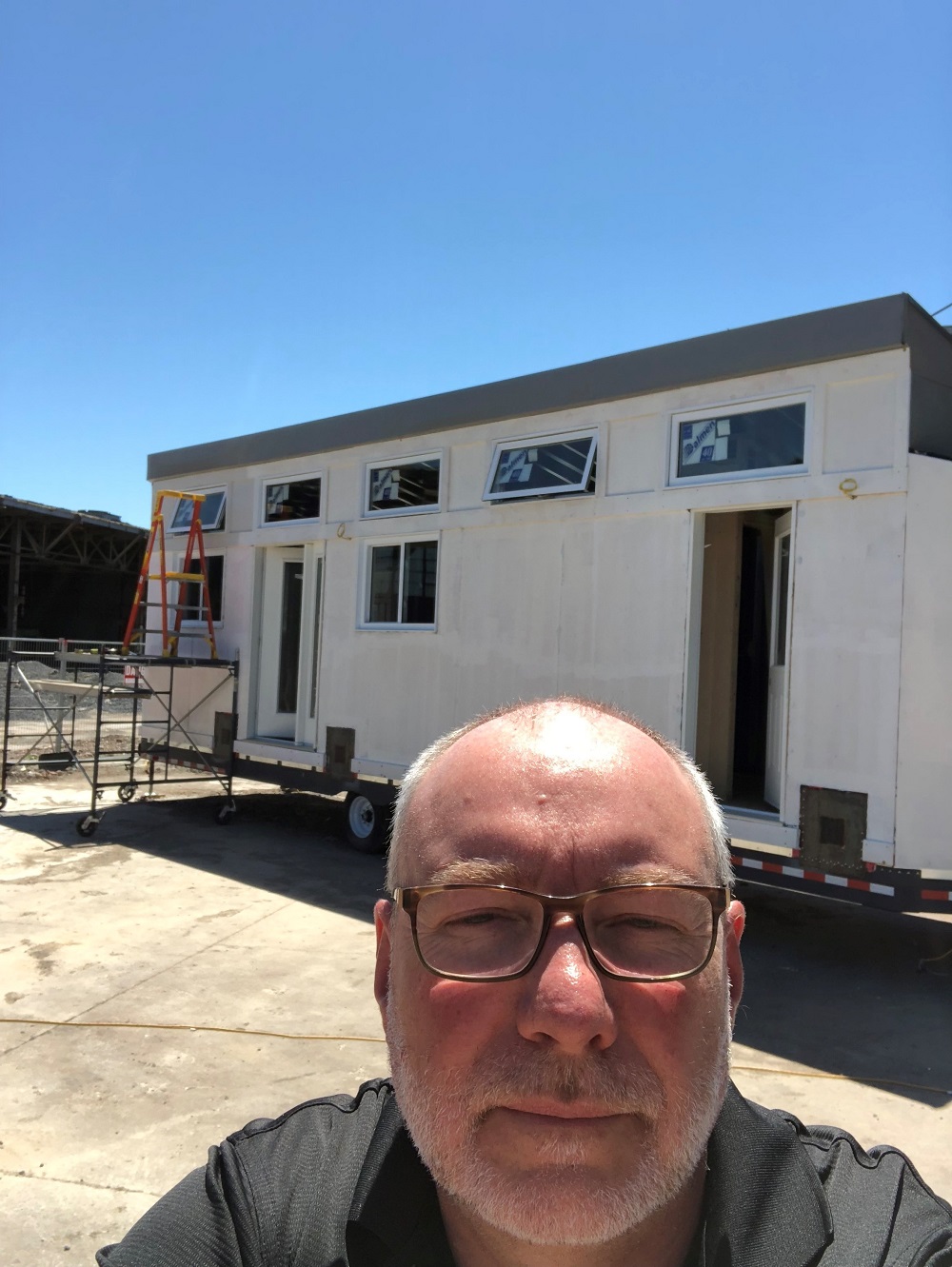Ed Peterson believes tiny homes are the answer to Ontario’s housing crisis.
The Kingston-based entrepreneur has been pushing the idea for years through his nonprofit Tiny Town Association. Launched in 2017, he started out as an advocate for small pocket communities, lobbying governments big and small to embrace change.
The Kingston-based entrepreneur has been pushing the idea for years through his nonprofit Tiny Town Association. Launched in 2017, he started out as an advocate for small pocket communities, lobbying governments big and small to embrace change.
With no proof of concept, Peterson found it tough going and so, in 2022, he switched gears and decided to use his background as a contractor to pitch projects directly, committing to designing and handling development of new builds himself.
“Our mission is to build affordable housing all across Ontario,” Peterson said, noting this mission is personal for him. “I have three kids who are all facing the same problem many young adults are facing today in trying to get into a home of their own. I just didn’t see that happening for them.”
The tiny home concept has been around for decades, but hasn’t taken off in Canada, Peterson said. He made a pitch to Dysart et al council last month to become one of the pioneers for the movement in Ontario.
The non-profit looks to partner with municipalities, which would put up land that can be built on. Peterson said the company could build between 16 and 20 residences per acre, with each unit featuring 384 sq. ft. of living space. There are options for one bedroom, two bedroom and open concept.
“Once we have that first model community up-and-running that we can point to as proof of concept, we’ll have a lot of interest,” Peterson told The Highlander. “I want to change the way people think about housing in this province.”
Peterson noted he’s working with approximately 15 municipalities in Ontario on initial proposals, with four – for Elliott Lake, Mattice, South Dundas, and Tay Township – at an advanced stage.
Outlining the process, Peterson said once land has been identified and a design developed, he would apply for funding through the Canada Mortgage and Housing Corporation (CMHC), which he estimated would foot around 45 per cent of a build’s bill. The rest would come from alternate sources, most of them would-be owners.
Homes could be bought for $127,500, with monthly maintenance fees of $450. Affordable rentals would be available for $780 per month, with rent-to-own programs running $1,180 per month.
He said tiny homes would largely cater to low-income workers, seniors, and young adults.
Tiny Town Association is actively working with four architects and builders in Ontario, with another dozen industry leaders in urban planning, project management, manufacturing, and landscaping also on board.
Peterson said a pocket community could be designed and constructed within months.
“We can have a tiny home coming out of a factory and going into a community every week. There’s no other housing option that can do that,” he said. “We design all our units to be built on a pad or pier foundation, which would enable us to build year-round.”
“We can have a tiny home coming out of a factory and going into a community every week. There’s no other housing option that can do that,” he said. “We design all our units to be built on a pad or pier foundation, which would enable us to build year-round.”
Dysart mayor Murray Fearrey said he was interested in learning how these communities can be built in rural areas.
“This hasn’t been tried and tested yet, so we need to be careful before getting too excited. There are some small lots around Dysart, but if land isn’t serviced, they want a minimum of four acres so they can put enough units in to make it financially feasible for them to put services in themselves. That could be tricky for us,” Fearrey said.
The mayor noted staff have been directed to identify potential development sites, which will be presented to council later this month.
Peterson said he’d love to work with Dysart to help alleviate the community’s housing needs.
“The beauty about tiny homes is we can scale this to local demand. If we have enough land, we can bring as many units online as are needed,” he said. “I don’t see tiny homes competing with traditional forms of housing.
We’re not saying this will be perfect for everyone. We just want to provide another option to people who are struggling.
“We’re not making money off this. I see it as a service. My focus now is on getting some of these communities up and running so we can show the rest of the province, the rest of the country that our model works and is easily replicable,” he added.
To learn more, visit tinytownassociation. com.





